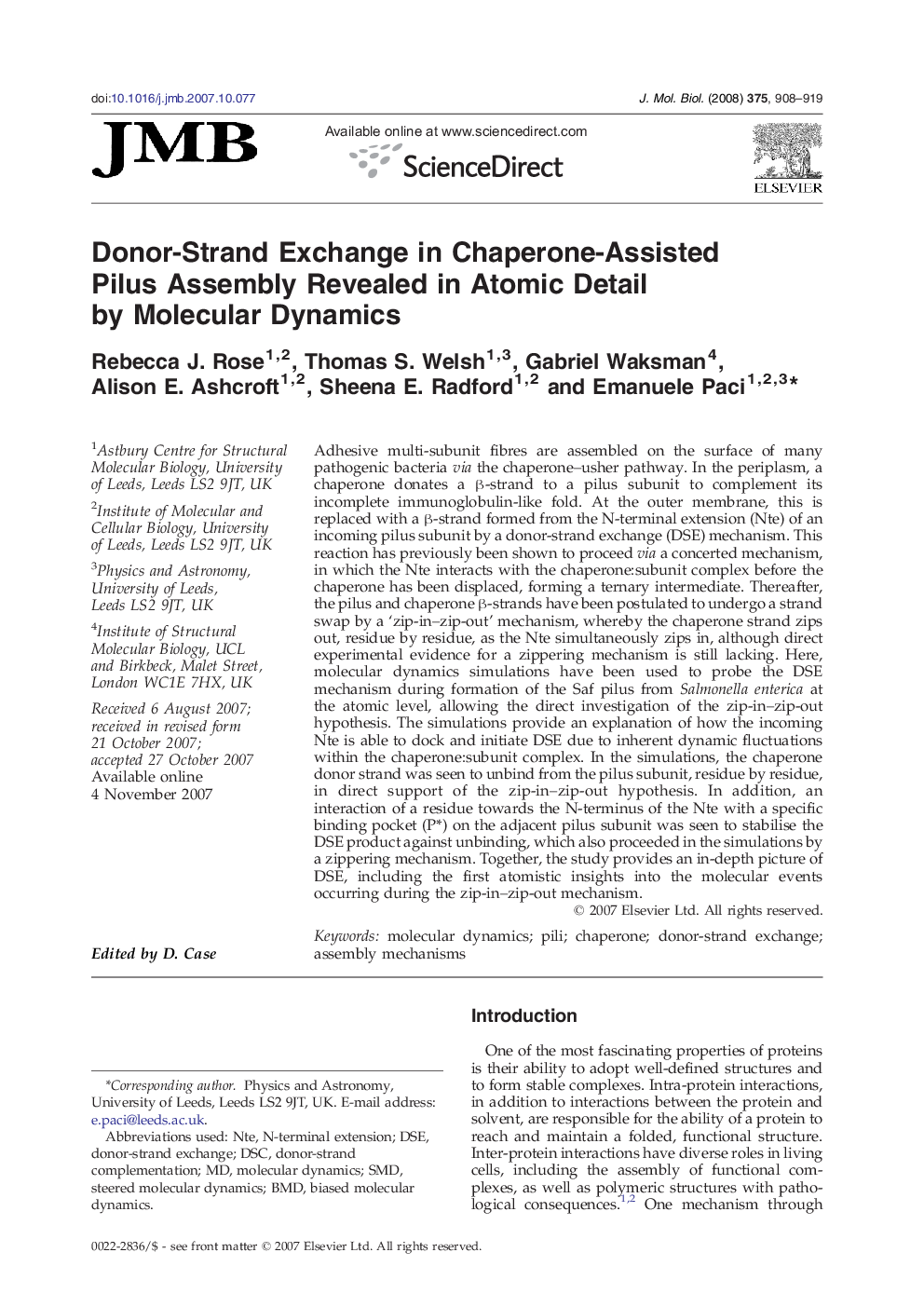| کد مقاله | کد نشریه | سال انتشار | مقاله انگلیسی | نسخه تمام متن |
|---|---|---|---|---|
| 2187591 | 1096128 | 2008 | 12 صفحه PDF | دانلود رایگان |

Adhesive multi-subunit fibres are assembled on the surface of many pathogenic bacteria via the chaperone–usher pathway. In the periplasm, a chaperone donates a β-strand to a pilus subunit to complement its incomplete immunoglobulin-like fold. At the outer membrane, this is replaced with a β-strand formed from the N-terminal extension (Nte) of an incoming pilus subunit by a donor-strand exchange (DSE) mechanism. This reaction has previously been shown to proceed via a concerted mechanism, in which the Nte interacts with the chaperone:subunit complex before the chaperone has been displaced, forming a ternary intermediate. Thereafter, the pilus and chaperone β-strands have been postulated to undergo a strand swap by a ‘zip-in–zip-out’ mechanism, whereby the chaperone strand zips out, residue by residue, as the Nte simultaneously zips in, although direct experimental evidence for a zippering mechanism is still lacking. Here, molecular dynamics simulations have been used to probe the DSE mechanism during formation of the Saf pilus from Salmonella enterica at the atomic level, allowing the direct investigation of the zip-in–zip-out hypothesis. The simulations provide an explanation of how the incoming Nte is able to dock and initiate DSE due to inherent dynamic fluctuations within the chaperone:subunit complex. In the simulations, the chaperone donor strand was seen to unbind from the pilus subunit, residue by residue, in direct support of the zip-in–zip-out hypothesis. In addition, an interaction of a residue towards the N-terminus of the Nte with a specific binding pocket (P*) on the adjacent pilus subunit was seen to stabilise the DSE product against unbinding, which also proceeded in the simulations by a zippering mechanism. Together, the study provides an in-depth picture of DSE, including the first atomistic insights into the molecular events occurring during the zip-in–zip-out mechanism.
Journal: Journal of Molecular Biology - Volume 375, Issue 4, 25 January 2008, Pages 908–919